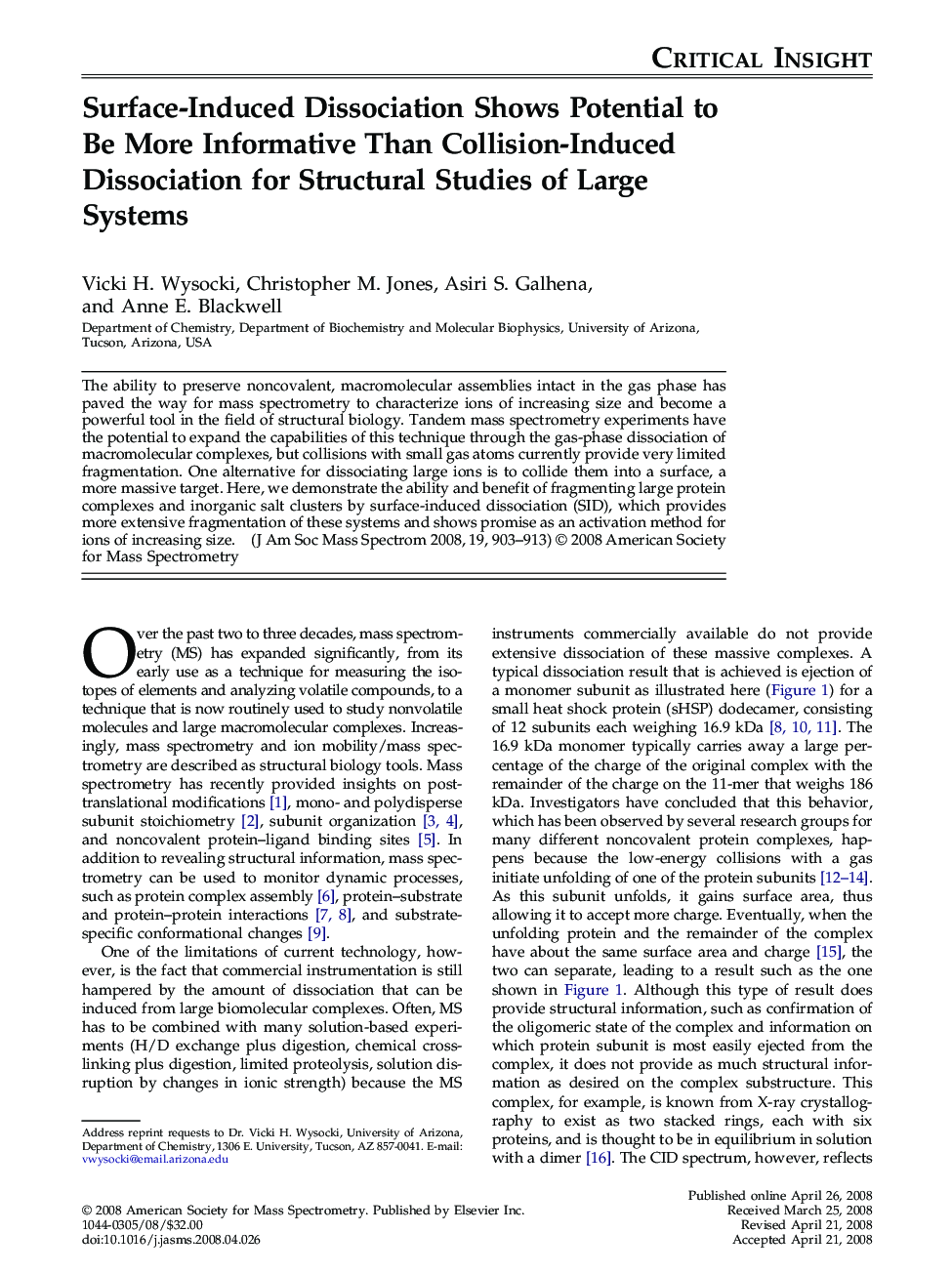| Article ID | Journal | Published Year | Pages | File Type |
|---|---|---|---|---|
| 1195309 | Journal of the American Society for Mass Spectrometry | 2008 | 11 Pages |
The ability to preserve noncovalent, macromolecular assemblies intact in the gas phase has paved the way for mass spectrometry to characterize ions of increasing size and become a powerful tool in the field of structural biology. Tandem mass spectrometry experiments have the potential to expand the capabilities of this technique through the gas-phase dissociation of macromolecular complexes, but collisions with small gas atoms currently provide very limited fragmentation. One alternative for dissociating large ions is to collide them into a surface, a more massive target. Here, we demonstrate the ability and benefit of fragmenting large protein complexes and inorganic salt clusters by surface-induced dissociation (SID), which provides more extensive fragmentation of these systems and shows promise as an activation method for ions of increasing size.
